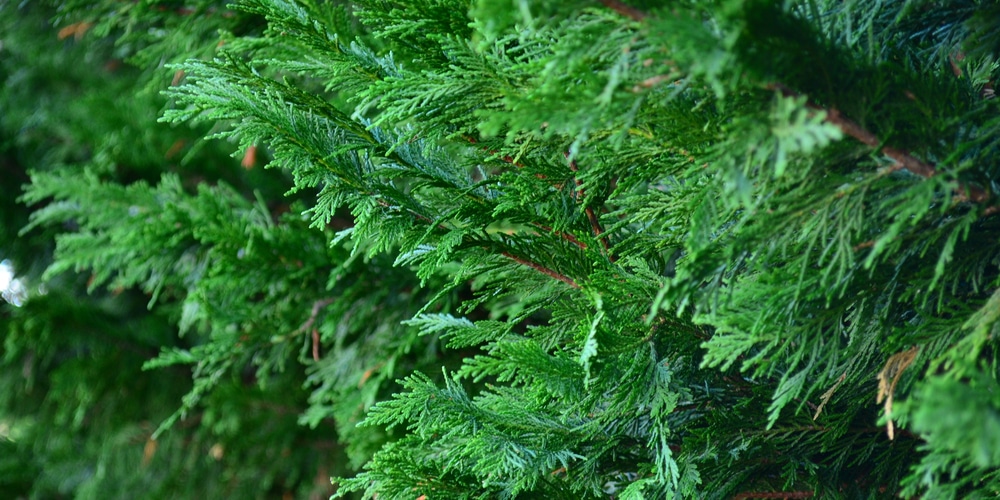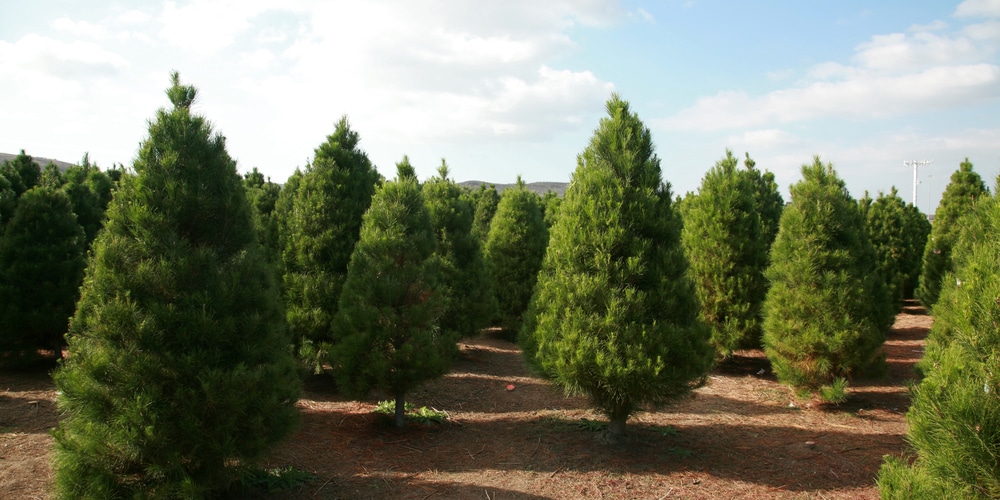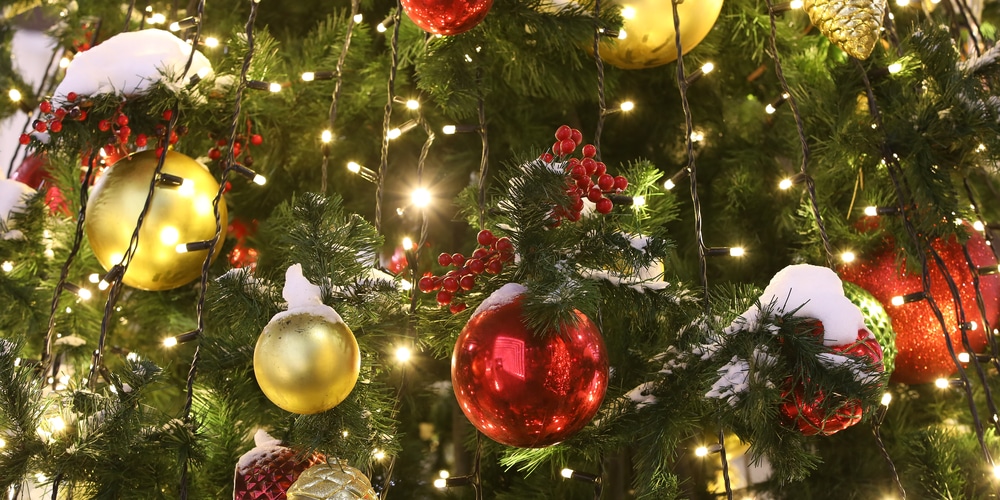Christmas trees are often fir or pine varieties that look festive when decorations and lights are put on them. One notable tree type is the Leyland Cypress, which is a worthy specimen that can grace your home during the holidays.
Let’s check out the Leyland Cypress Christmas tree and learn more about the different varieties.
Do Leyland Cypress Trees Make Good Christmas Trees?
Leyland Cypress trees are actually popular Christmas trees in the southeast. They exhibit the same characteristics of firs and pines, but with a few notable bonuses.
You get an evergreen variety with a bushy and conical growth habit, dark green-gray leaves, and one that doesn’t bleed sap, which is a good thing for those who suffer from allergies.
There are several Leyland Cypress cultivars, with the most popular ones being the Alice Holt Cypress, Naylor’s Blue, Castlewellan Gold, Silver Dust, Murray Cypress, and Leighton Green. All of them make good Christmas trees because they assume a natural pyramid shape and don’t drop needles.
Leyland Cypress Christmas Tree Varieties
Alice Holt Cypress
The ‘Alice Holt’ species has the same green foliage and growth habit, but the ends of the branches hang downwards. The tree also sports an open crown.
Naylor’s Blue Cypress
Appears to be somewhat similar to Himalayan blue pine, with blue-gray leaves and drooping tips. Naylor’s Blue has thicker and stronger branches compared to Leighton Green.
Castlewellan Gold Cypress
Castlewellan Gold has a unique golden yellow appearance during the winter season (hence the name), but the leaves are bright green in summer and spring. Unlike Naylor’s Blue and Alice Holt, the branches point upwards and adopt a sprightly look.
Silver Dust Cypress
The name ‘Silver Dust’ comes from the streaks of silvery-white stems and leaves adorning the tree. Most of the time, the foliage assumes the normal bright green of a typical Leyland Cypress.
Murray Cypress
Leyland Cypress trees aren’t known for having a strong scent that is commonly associated with the holidays, but the Murray Cypress is probably the species that has a greater aroma than the others. It also tends to have a wider spread and darker color, along with thick branches.
Leighton Green Cypress
‘Leighton Green’ is the most commonly used Leyland Cypress Christmas tree as it exhibits all the characteristics of one. The dark green leaves shimmer in bright light and are sturdy enough to hold a considerable amount of lights and decorations.
Leyland Cypress Appearance and Aroma
Leyland Cypress is a hybrid of the Alaskan cedar and the Monterey cypress. An individual named CJ Leyland discovered the seedlings, and he began caring for them. In the 40s, rooted cuttings arrived in the US; in 1965 Leyland Cypress were thought to be used as Christmas trees.
Leyland Cypress come in several varieties, but all of them tend to have irregularly-arranged flat panes with foliage colors ranging from dark green to gray. Each branch tends to produce multiple shoots, and the shoots themselves grow lots of snowflake-like leaves.
It’s worth noting that Leyland Cypress trees do not produce as much aroma as their fir or pine counterparts. However, the Leyland species more than make up for it with needles that stay on the branch and are generally safer to have in homes (due to its hypoallergenic nature).
The Leyland Cypress’ bark is another noteworthy mention- it’s delicate and has the texture of the skin. Mature Leyland trees tend to reach more than a hundred feet and can withstand freezing temperatures of around 0 degrees F.
How to Care for a Leyland Cypress Christmas Tree
Leyland Cypress trees are easier to care for than other Christmas tree varieties. They generally do not need constant watering and can suffer from root rot easily if you provide too much irrigation.
These trees can usually survive on rainfall and the occasional watering on hot days. Fertilizing is not needed, but you’ll need to watch out for bagworms as a potential pest.
The cypress species tend to grow well in California, Florida, Georgia, Alabama, Louisiana, and Mississippi.
Leyland Cypress trees do not produce fruits or seeds, and the only way to propagate them is to take cuttings. The tree’s sterile nature leaves less of a mess in the yard or landscape should you decide to grow them beyond their usual holiday purpose.
Related Article: Blue Ice Christmas Tree


